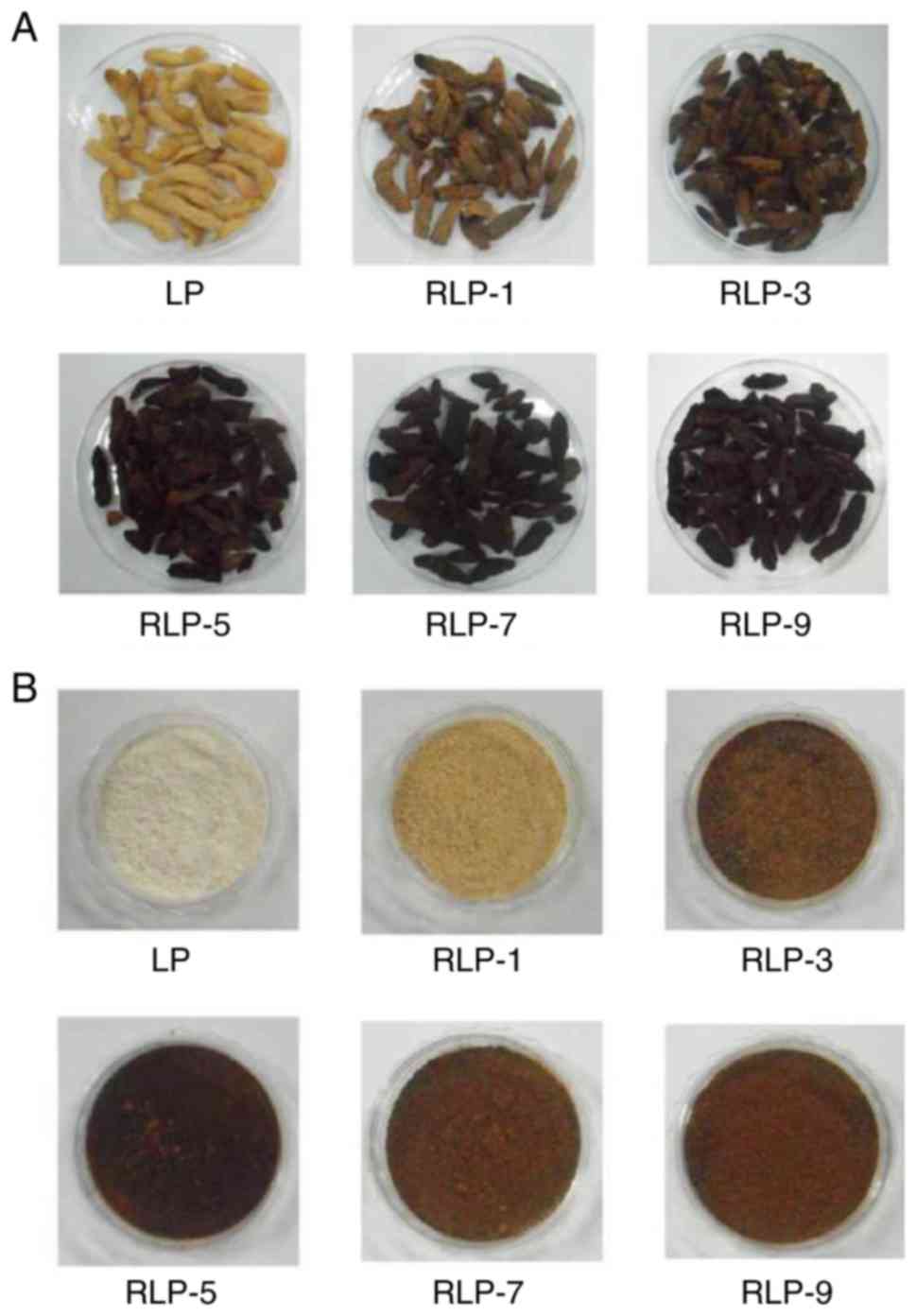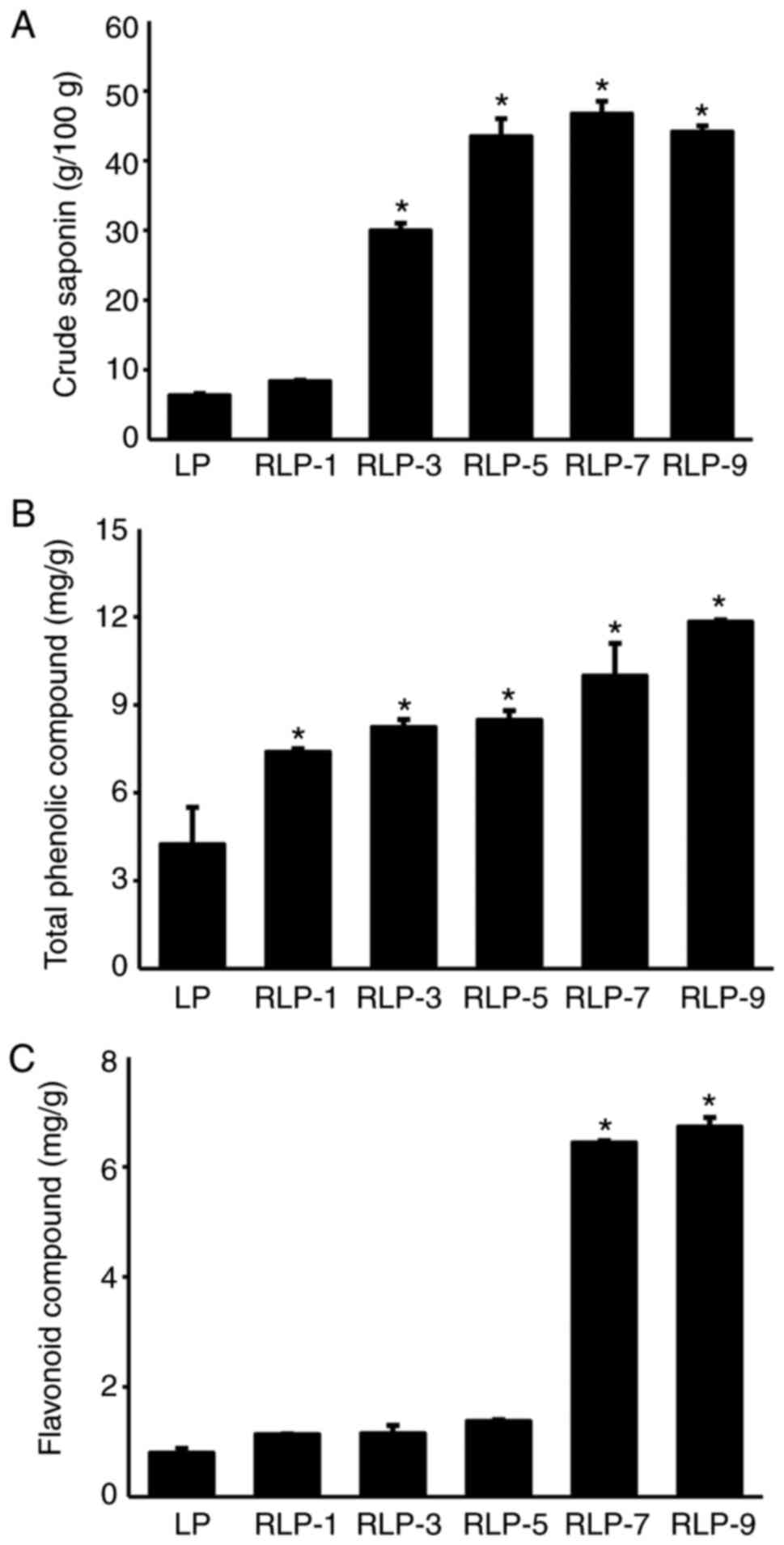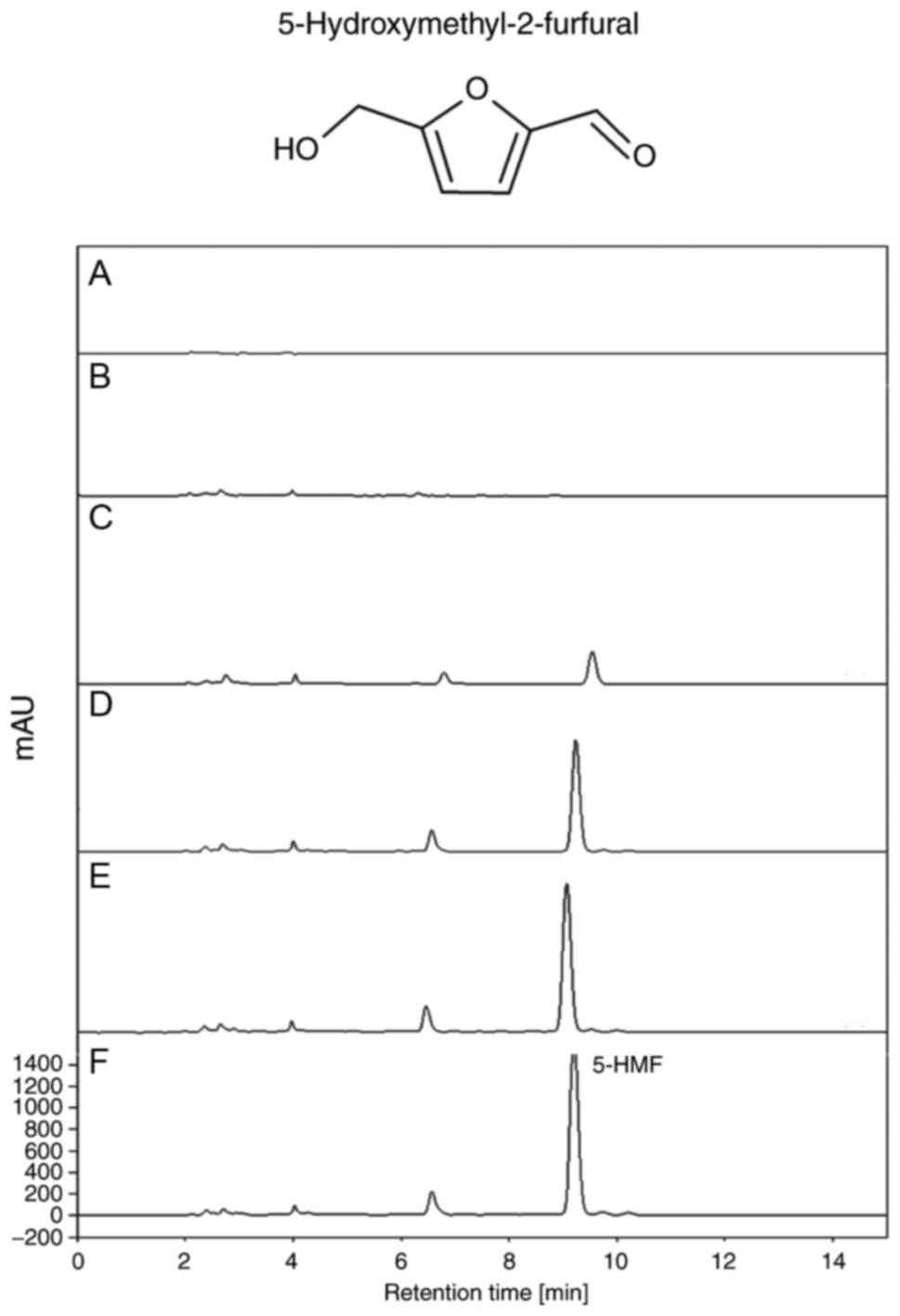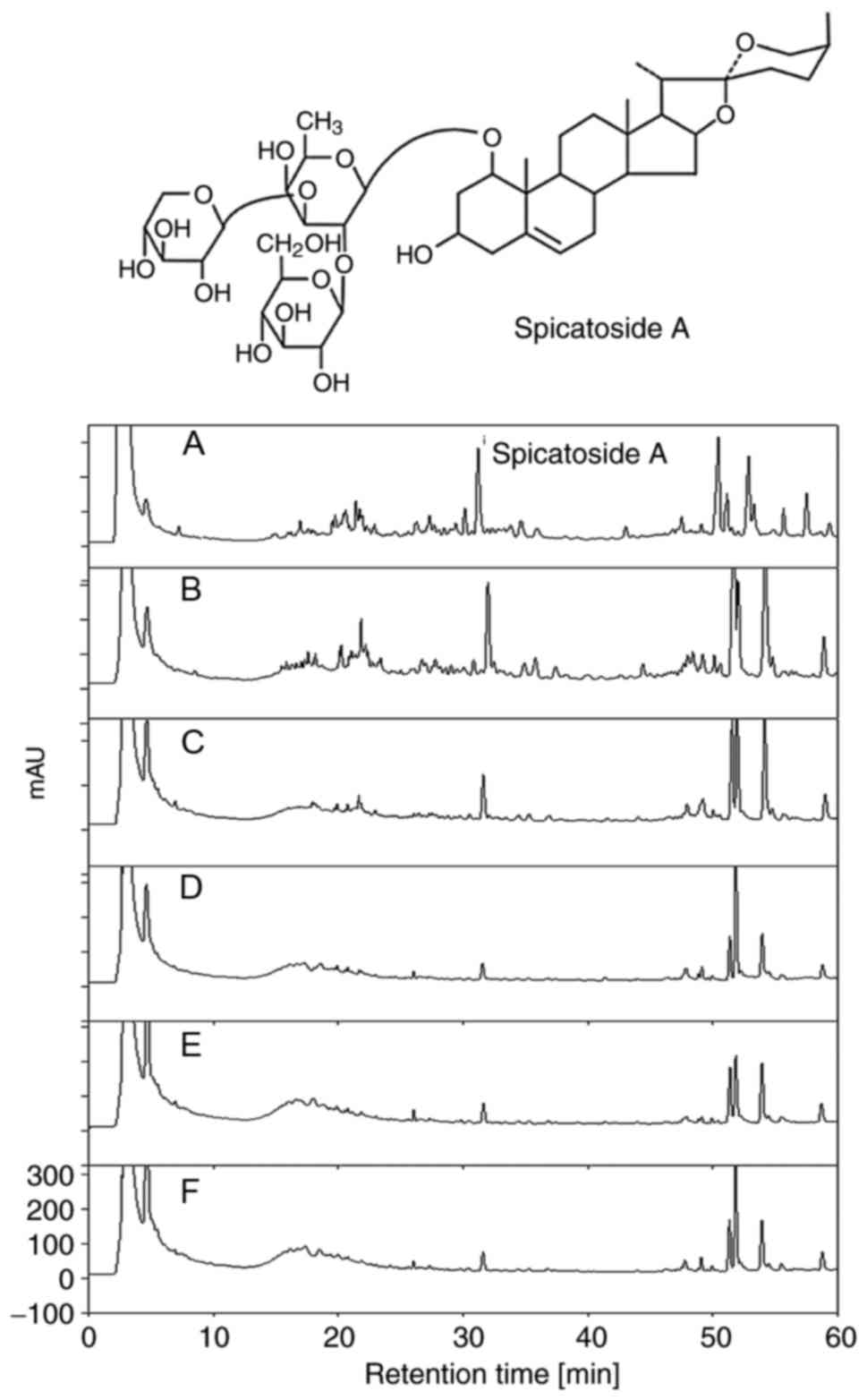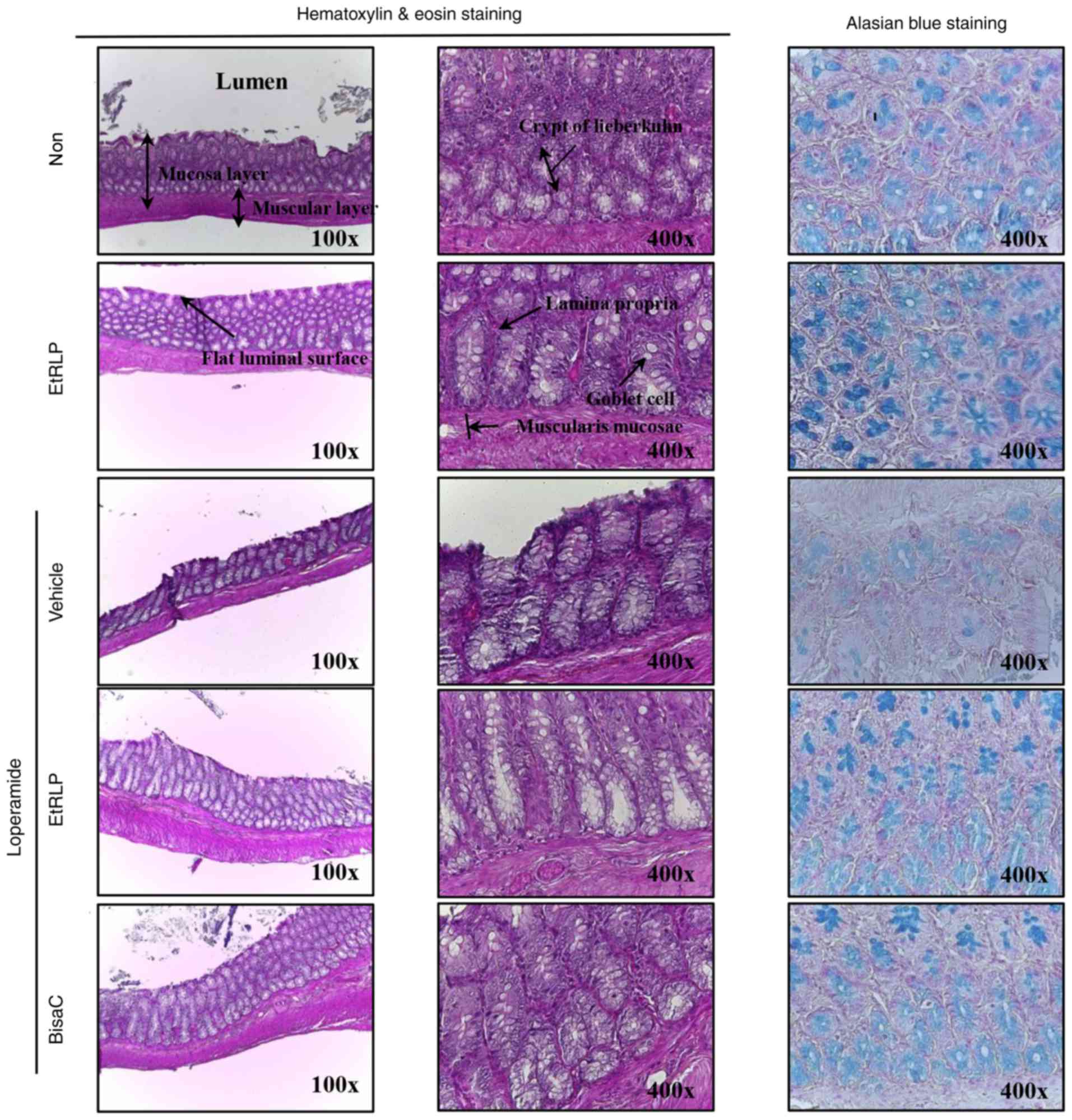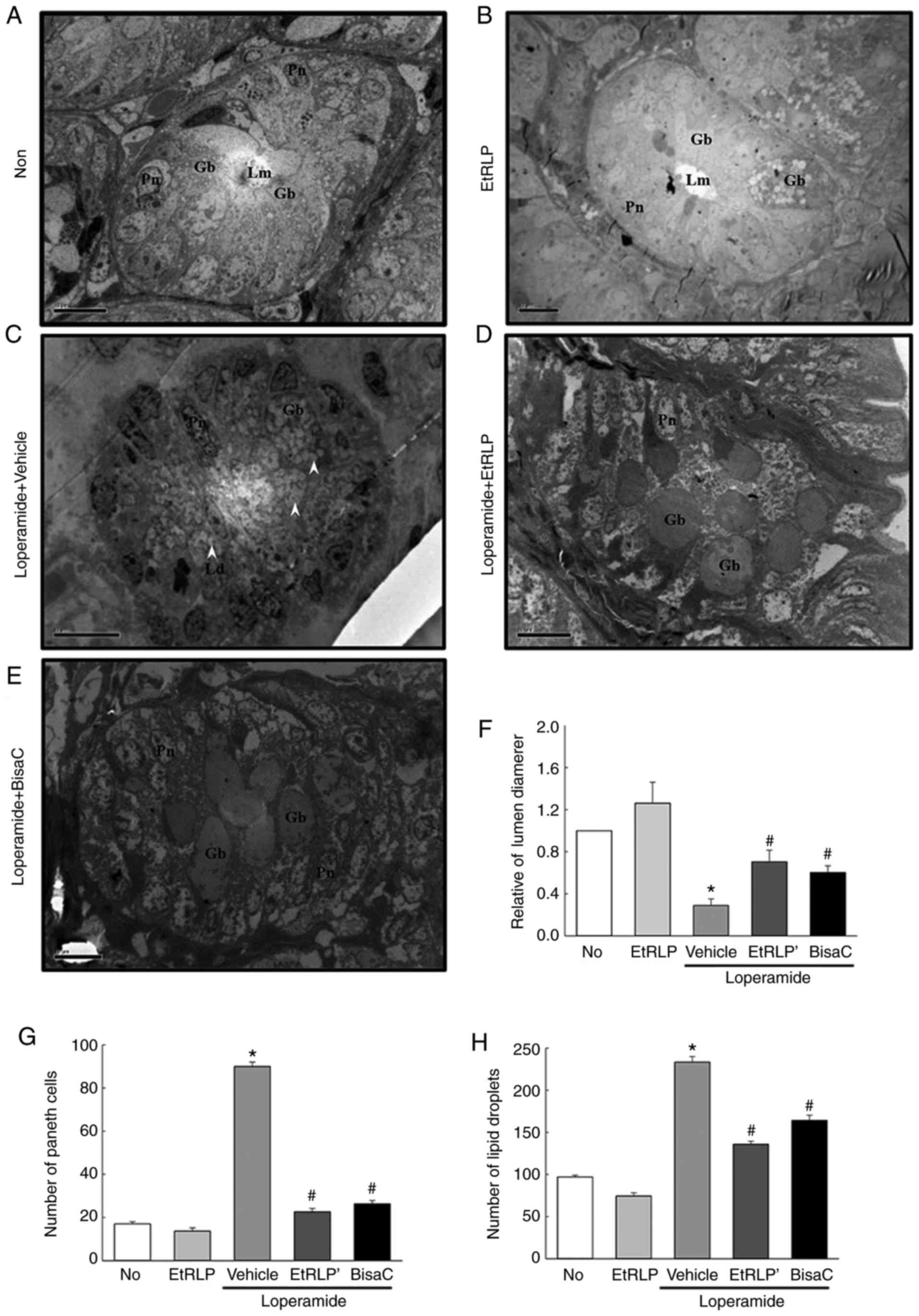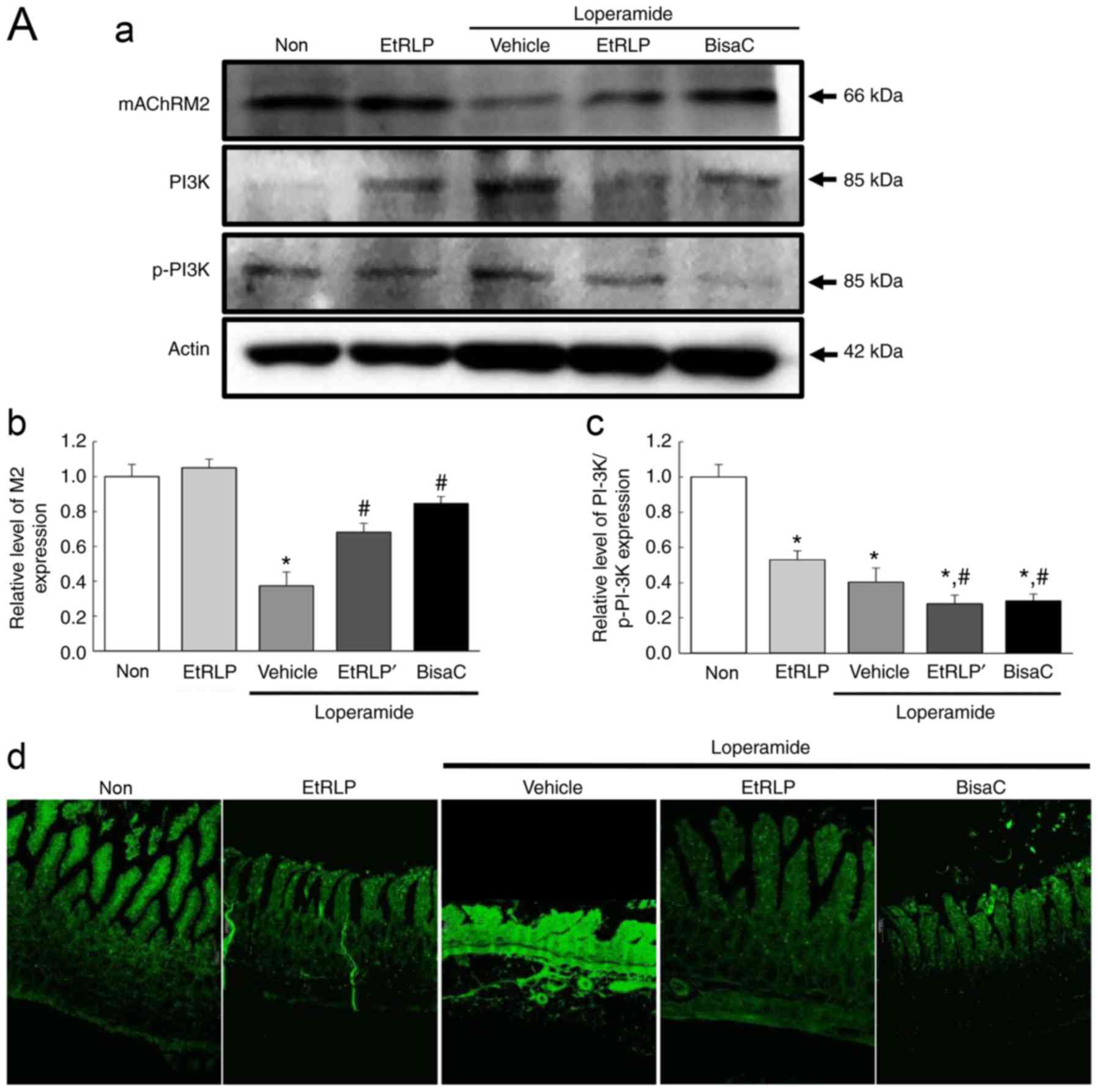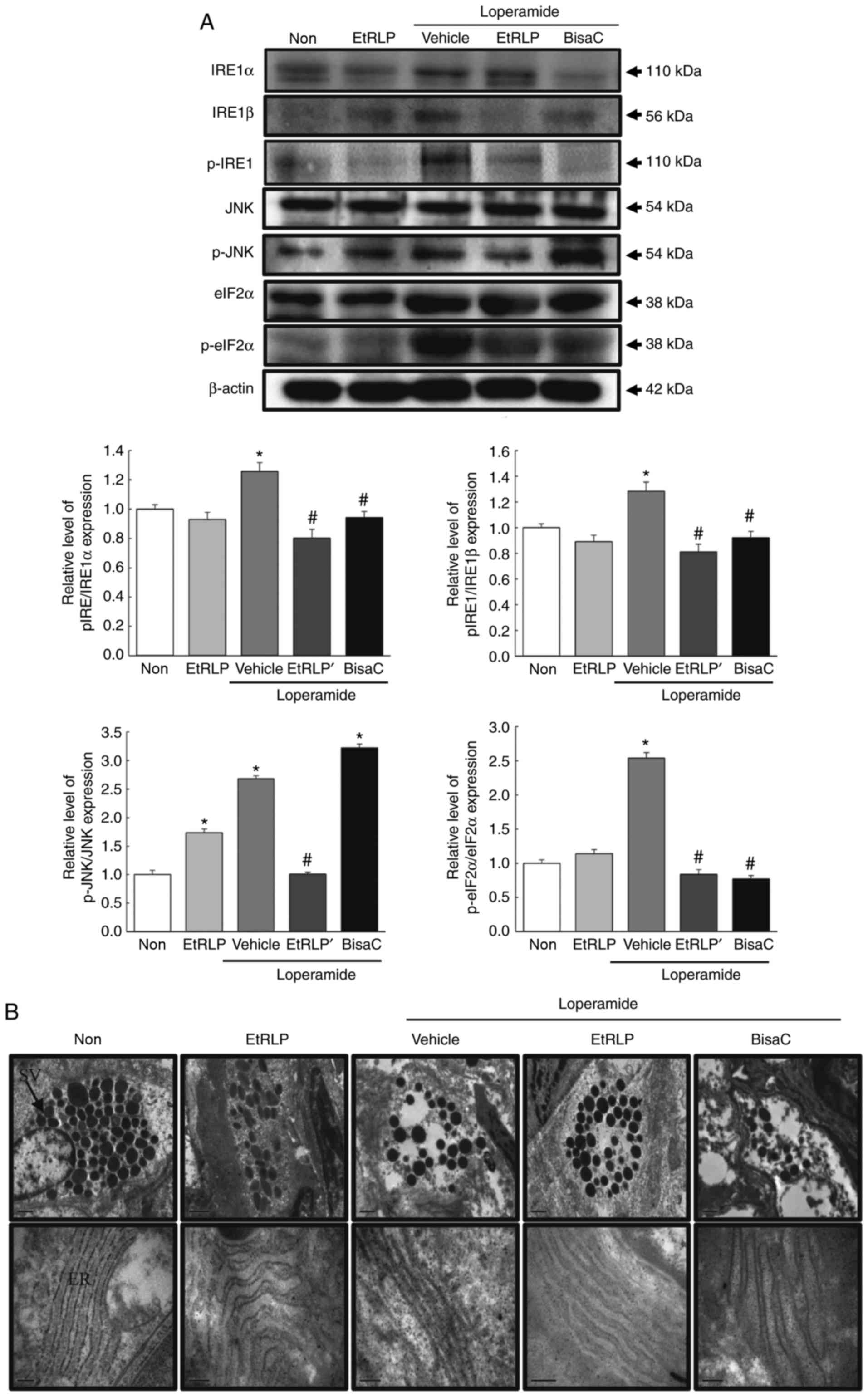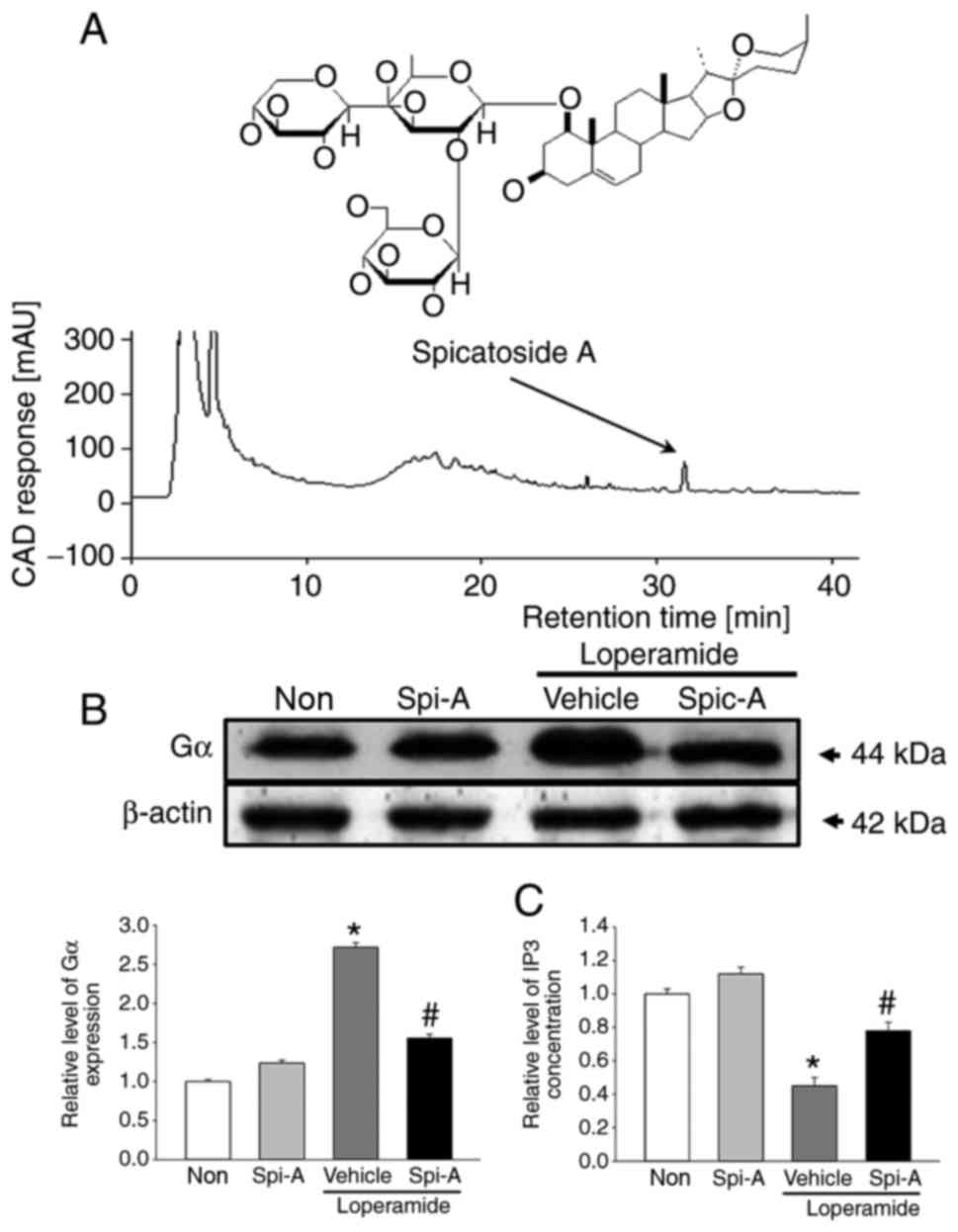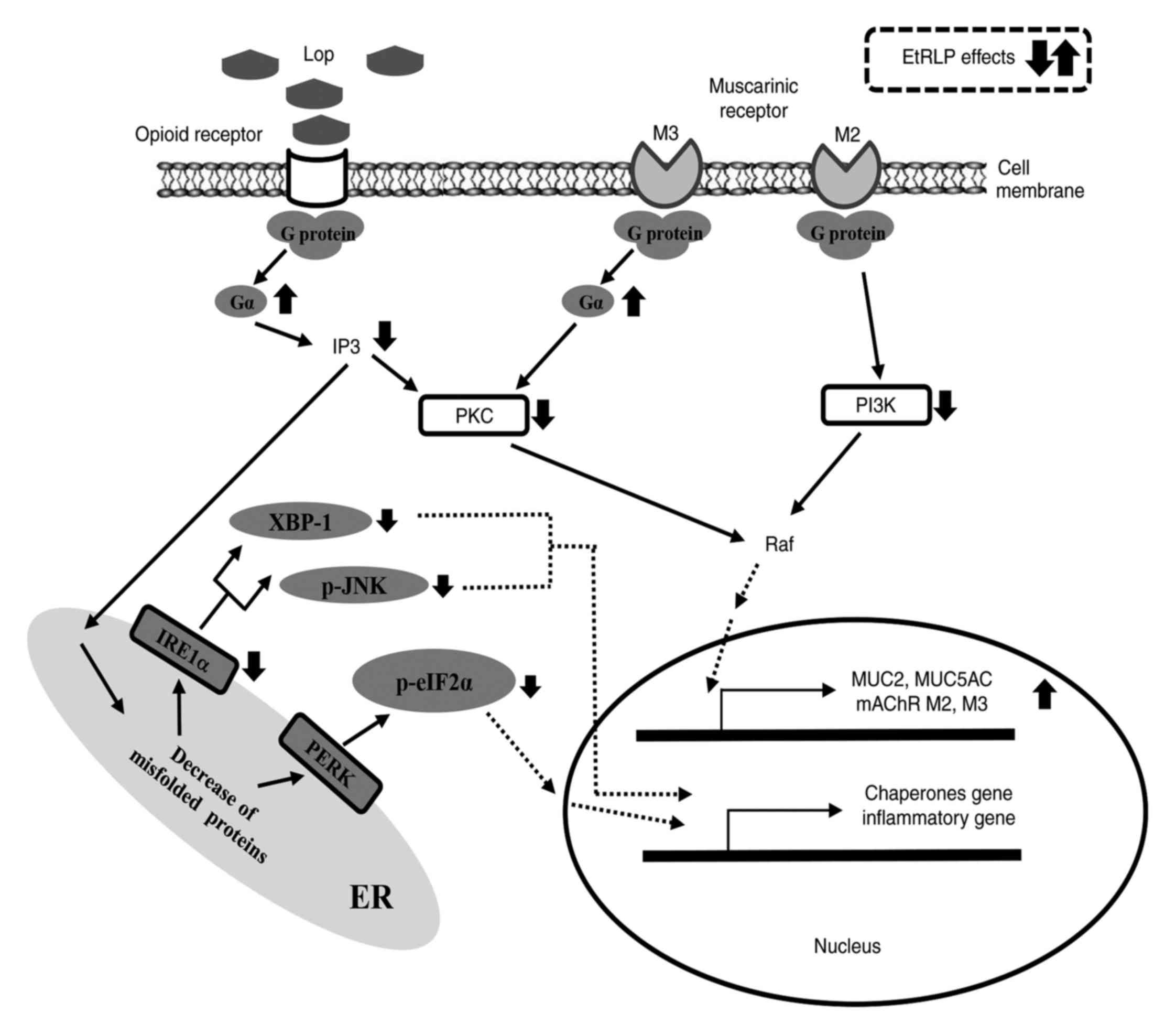|
1
|
Walia R, Mahajan L and Steffen R: Recent
advances in chronic constipation. Curr Opin Pediatr. 21:661–666.
2009. View Article : Google Scholar : PubMed/NCBI
|
|
2
|
McCallum IJ, Ong S and Mercer-Jones M:
Chronic constipation in adults. BMJ. 338:b8312009. View Article : Google Scholar : PubMed/NCBI
|
|
3
|
Emmanuel AV, Tack J, Quigley EM and Talley
NJ: Pharmacological management of constipation. Neurogastroenterol
Motil. 21(Suppl 2): S41–S54. 2009. View Article : Google Scholar
|
|
4
|
Leung FW: Etiologic factors of chronic
constipation: Review of the scientific evidence. Dig Dis Sci.
52:313–316. 2007. View Article : Google Scholar : PubMed/NCBI
|
|
5
|
Siegel JD and Di Palma JA: Medical
treatment constipation. Clin Colon Rectal Surg. 18:76–80. 2005.
View Article : Google Scholar : PubMed/NCBI
|
|
6
|
Portalatin M and Winstead N: Medical
management of constipation. Clin Colon Rectal Surg. 25:12–19. 2012.
View Article : Google Scholar :
|
|
7
|
Tzavella K, Riepl RL, Klauser AG,
Voderholzer WA, Schindbeck NE and Müller-Lissner SA: Decreased
substance P levels in rectal biopsies from patients with slow
transit constipation. Eur J Gastroenterol Hepatol. 8:1207–1211.
1996. View Article : Google Scholar : PubMed/NCBI
|
|
8
|
Schiller LR: Review article: The therapy
of constipation. Aliment Pharmacol Ther. 15:749–763. 2001.
View Article : Google Scholar : PubMed/NCBI
|
|
9
|
Ewe K: Effect of bisacodyl on intestinal
electrolyte and water net transport and transit. Perfusion studies
in men. Digestion. 37:247–253. 1987. View Article : Google Scholar : PubMed/NCBI
|
|
10
|
Kienzle-horn S, Vix JM, Schuijt C, Peil H,
Jordan CC and Kamm MA: Efficacy and safety of bisacodyl in the
acute treatment of constipation: A double-blind, randomized,
placebo-controlled study. Aliment Pharmacol Ther. 23:1479–1488.
2006. View Article : Google Scholar : PubMed/NCBI
|
|
11
|
Wintola OA, Sunmonu TO and Afolayan AJ:
The effect of Aloe ferox Mill. in the treatment of
loperamide-induced constipation in Wistar rats. BMC Gastroenterol.
10:952010. View Article : Google Scholar : PubMed/NCBI
|
|
12
|
Kakino M, Izuta H, Ito T, Tsuruma K, Araki
Y, Shimazawa M, Oyama M, Iinuma M and Hara H: Agarwood induced
laxative effects via acetylcholine receptors on loperamide-induced
constipation in mice. Biosci Biotechnol Biochem. 74:1550–1555.
2010. View Article : Google Scholar : PubMed/NCBI
|
|
13
|
Lee HY, Kim JH, Jeung HW, Lee CU, Kim DS,
Li B, Lee GH, Sung MS, Ha KC, Back HI, et al: Effects of Ficus
carica paste on loperamide-induced constipation in rats. Food Chem
Toxicol. 50:895–902. 2012. View Article : Google Scholar
|
|
14
|
Kim JE, Lee YJ, Kwak MH, Ko J, Hong JT and
Hwang DY: Aqueous extracts of Liriope platyphylla induced
significant laxative effects on loperamide-induced constipation of
SD rats. BMC Complement Altern Med. 13:3332013. View Article : Google Scholar : PubMed/NCBI
|
|
15
|
Lee HR, Kim JE, Goo JS, Choi SI, Hwang IS,
Lee YJ, Son HJ, Lee HS, Lee JS and Hwang DY: Red Liriope
platyphylla contains a large amount of polyphenolic compounds which
stimulate insulin secretion and suppress fatty liver formation
through the regulation of fatty acid oxidation in OLETF rats. Int J
Mol Med. 30:905–913. 2012. View Article : Google Scholar : PubMed/NCBI
|
|
16
|
Lee JS, Kim SH, Choi DW, Lee HS, Soon HJ
and Hwang DY: Red Liriopis tuber production by steam and drying
process of Liriopis tuber and development of its functional food
products. Lee JS: Ministry of Agriculture, Food and +Rural Affairs;
Sejong: pp. 285–289. 2013
|
|
17
|
Kim JE, Koh EK, Song SH, Sung JE, Lee HA,
Lee HG, Choi YW and Hwang D: Effects of five candidate laxatives
derived from Liriope platyphylla on the 5-HT receptor signaling
pathway in three cell types present in the transverse colon. Mol
Med Rep. 15:431–441. 2017. View Article : Google Scholar
|
|
18
|
Adolph TE, Tomczak MF, Niederreiter L, Ko
HJ, Böck J, Martinez-Naves E, Glickman JN, Tschurtschenthaler M,
Hartwig J, Hosomi S, et al: Paneth cells as a site of origin for
intestinal inflammation. Nature. 503:272–276. 2013. View Article : Google Scholar : PubMed/NCBI
|
|
19
|
Méité S, Bahi C, Yéo D, Datté JY, Djaman
JA and N’guessan DJ: Laxative activities of Mareya micrantha
(Benth.) Müll. Arg. (Euphorbiaceae) leaf aqueous extract in rats.
BMC Complement Altern Med. 10:72010. View Article : Google Scholar
|
|
20
|
Shahbazian A, Heinemann A, Schmidhammer H,
Beubler E, Holzer-Petsche U and Holzer P: Involvement of mu- and
kappa-, but not delta-, opioid receptors in the peristaltic motor
depression caused by endogenous and exogenous opioids in the
guinea-pig intestine. Br J Pharmacol. 135:741–750. 2002. View Article : Google Scholar : PubMed/NCBI
|
|
21
|
Wingate D, Phillips SF, Lewis SJ,
Malagelada JR, Speelman P, Steffen R and Tytgat GN: Guidelines for
adults on self-medication for the treatment of acute diarrhoea.
Aliment Pharmacol Ther. 15:773–782. 2001. View Article : Google Scholar : PubMed/NCBI
|
|
22
|
Huighebaert S, Awouters F and Tytgat GN:
Racecadotril versus loperamide: Antidiarrheal research revisited.
Dig Dis Sci. 48:239–250. 2003. View Article : Google Scholar : PubMed/NCBI
|
|
23
|
Hirota CL and McKay DM: Cholinergic
regulation of epithelial ion transport in the mammalian intestine.
Br J Pharmacol. 149:463–479. 2006. View Article : Google Scholar : PubMed/NCBI
|
|
24
|
Levey AI: Immunological localization of
m1-m5 muscarinic acetylcholine receptors in peripheral tissues and
brain. Life Sci. 52:441–448. 1993. View Article : Google Scholar : PubMed/NCBI
|
|
25
|
Anini Y, Hansotia T and Brubaker PL:
Muscarinic receptors control postprandial release of glucagon-like
peptide-1: In vivo and in vitro studies in rats. Endocrinology.
143:2420–2426. 2002. View Article : Google Scholar : PubMed/NCBI
|
|
26
|
Isler JA, Skalet AH and Alwine JC: Human
cytomegalovirus infection activates and regulates the unfolded
protein response. J Virol. 79:6890–6899. 2005. View Article : Google Scholar : PubMed/NCBI
|
|
27
|
Mattson MP: Calcium and neurodegeneration.
Aging Cell. 6:337–350. 2007. View Article : Google Scholar : PubMed/NCBI
|
|
28
|
Chen YM, Zhou Y, Go G, Marmerstein JT,
Kikkawa Y and Miner JH: Laminin β2 gene missense mutation produces
endoplasmic reticulum stress in podocytes. J Am Soc Nephrol.
24:1223–1233. 2013. View Article : Google Scholar : PubMed/NCBI
|
|
29
|
Deldicque L, Cani PD, Philp A, Raymackers
JM, Meakin PJ, Ashford ML, Delzenne NM, Francaux M and Baar K: The
unfolded protein response is activated in skeletal muscle by
high-fat feeding: Potential role in the down regulation of protein
synthesis. Am J Physiol Endocrino Metab. 299:E695–E705. 2010.
View Article : Google Scholar
|
|
30
|
Zhang K and Kaufman RJ: From
endoplasmic-reticulum stress to the inflammatory response. Nature.
454:455–462. 2008. View Article : Google Scholar : PubMed/NCBI
|
|
31
|
Ron D and Walter P: Signal integration in
the endoplasmic reticulum unfolded protein response. Nat Rev Mol
Cell Biol. 8:519–529. 2007. View Article : Google Scholar : PubMed/NCBI
|
|
32
|
Schröder M and Kaufman RJ: The mammalian
unfolded protein response. Annu Rev Biochem. 74:739–789. 2005.
View Article : Google Scholar : PubMed/NCBI
|
|
33
|
Jiang Y, Zhang Y, Wark L, Ortiz E, Lim S,
He H, Wang W, Medeiros D and Lin D: Wolfberry water soluble
phytochemicals down-regulate ER stress biomarkers and modulate
multiple signaling pathways leading to inhibition of proliferation
and induction of apoptosis in jurkat cells. J Nutr Food Sci.
S2:pii: 0012011.
|
|
34
|
Xu C, Bailly-Maitre B and Reed JC:
Endoplasmic reticulum stress: Cell life and death decisions. J Clin
Invest. 115:2656–2664. 2005. View Article : Google Scholar : PubMed/NCBI
|
|
35
|
Yoshida H: ER stress and diseases. FEBS J.
274:630–658. 2007. View Article : Google Scholar : PubMed/NCBI
|
|
36
|
Niederreiter L and Kaser A: Endoplasmic
reticulum stress and inflammatory bowel disease. Acta Gastroenterol
Belg. 74:330–333. 2011.PubMed/NCBI
|
|
37
|
Zheng J, Wu LJ, Zheng L, Wu B and Song AH:
Two new mono-terpenoid glycosides from Mentha spicata L. J Asian
Nat Prod Res. 5:69–73. 2003. View Article : Google Scholar : PubMed/NCBI
|
|
38
|
Hur J, Lee P, Moon E, Kang I, Kim SH, Oh
MS and Kim SY: Neurite outgrowth induced by spicatoside A, a
steroidal saponin, via the tyrosine kinase A receptor pathway. Eur
J Pharmacol. 620:9–15. 2009. View Article : Google Scholar : PubMed/NCBI
|
|
39
|
Park SH, Lee HJ, Ryu J, Son KH, Kwon SY,
Lee SK, Kim YS, Hong JH, Seok JH and Lee CJ: Effects of
ophiopogonin D and spicatoside A derived from Liriope tuber on
secretion and production of mucin from airway epithelial cells.
Phytomedicine. 21:172–176. 2014. View Article : Google Scholar
|
|
40
|
Lim H, Min DS, Kang Y, Kim HW, Son KH and
Kim HP: Inhibition of matrix metalloproteinase-13 expression in
IL-1β-treated articular chondrocytes by a steroidal saponin,
spicatoside A, and its cellular mechanisms of action. Arch Pharm
Res. 38:1108–1116. 2015. View Article : Google Scholar : PubMed/NCBI
|















